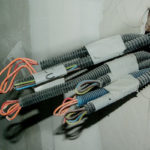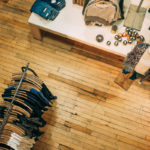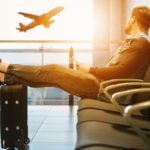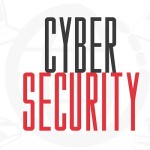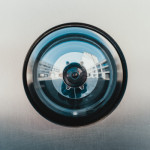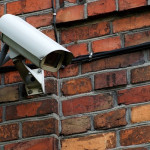The Benefits Of Video Analytics
More and more surveillance camera systems are taking advantage of video analytics, which help to provide a better understanding of the areas being monitored. Whether they are added to your system via additional software or they are built-in to your security cameras, video analytics have advanced over time and deliver more practical and reliable performance.
Not only do video analytics improve overall security, but they can also provide valuable data for business intelligence. Here are some common and helpful video analytics functions and how they can benefit business.
- Facial Recognition
This function can identify individuals in real-time by cross referencing distinct characteristics against public and private databases and/or watch lists of known individuals. With that said, this function makes it easier to identify and locate wanted criminals if they are captured on smart cameras.
When it comes to casinos, for example, facial recognition can be used to detect cheaters. On the other hand, it can also be used to detect high rollers for VIP attention, or to detect high profile shoppers in a retail setting.
- Heat Mapping
Heat mapping measures and rates motion in a given image and uses color to portray the intensity of motion in that area. You might wonder how this data could help businesses, but there are numerous ways it does.
For example, retail stores can use heat mapping to better understand the flow of traffic. Knowing which way customers tend to travel when they enter the store (straight, left, right) can help business owners create a better floor plan. They can identify merchandising areas for optimal product placement which can then lead to increased sales. In addition, the data collected allows management to determine the high volume shopping days and times for more effective staffing and product placements.
- People Counting
This function is self explanatory, as it literally counts the number of people entering or exiting a specified area. This is especially useful for sports and entertainment venues as the data can help improve staffing for concession stands, ticketing areas, and entry/exit points. And since it is based on real-time data, security can better respond and allocate personnel when a large number of people quickly gather at an entrance. - Occupancy Estimation
Similar to people counting, occupancy estimation can determine on average how many people are present, even at different times of day. This data can benefit any type of venue or building. For example, event planners can optimize the use of space, improve staff planning, help determine business hours, and adjust lighting and temperature conditions accordingly. And in emergency situations, security can use this data to communicate with first responders to determine the best response. - Tripwire/Intrusion Detection
This acts as a virtual fence, which can detect when an object or person crosses the virtual line. When detected, security is alerted so they may assess the situation and address it right away. This can also reduce false alarms, and thus eliminate the added costs that go along with them. In warehousing and manufacturing environments, digital fencing can improve compliance by notifying personnel when people or materials cross designated work zone areas. - Motion Detection
Last but not least, motion detection has already proven extremely beneficial for security purposes. Nearly every security camera is equipped with motion detection, and with reason. This function allows you to designate an area of any shape or size, and when any motion is detected within this area, you will be alerted. Museums, for example, can benefit from this technology as it can be used to determine when people are getting too close to an exhibit, or when an object is picked up or moved.
Have you employed video analytics within your surveillance systems? Share your experiences with us on Facebook, Google+, Twitter, LinkedIn, and Pinterest.
For a grand selection of affordable, top quality security cameras and surveillance systems, please visit SecurityCamExpert.com. If you have any questions, would like to request a free quote, or want to schedule a site survey, please call us at 888-203-6294 and will be happy to help.
Holiday Home Safety
‘Tis the season for holiday and good cheer! Unfortunately, there are also hidden dangers lurking around. Here are some smart safety tips to protect your home and family.
Holiday Lighting
Beautiful light displays are a sight to see, but they can also be a fire waiting to happen.
- Carefully examine your holiday light strings each year. Discard any with frayed cords, cracked sockets or lamp holders, loose connections or tightly kinked cords. Before replacing bulbs, unplug the light string and be sure the voltage and wattage of the new bulb is the same as the original bulb.
- Always look for certification marks of an accredited certification organization (ex. CSA International, UL, ELT)when choosing products such as light strings, extension cords, spotlights, electrical decorations, gas appliances and carbon monoxide alarms. The certification mark ensures that the products comply with applicable standards for safety and performance.
- Avoid overloading extension cords, such as connecting more than one extension cord together. Instead, use a single cord that is long enough to reach the outlet without stretching, but not so long that it can get easily tangled.
- Remember to keep lit candles far from decorations and other flammable materials. Also, keep your children and pets away from light strings and decorations that use electricity.
- Never use electric lights on a metallic tree – a single touch can cause electrocution. For outdoor lights, keep electrical connectors off of the ground and away from metal rain gutters. To hold the strings in place, use insulated tape or plastic clips (not metal nails or tacks).
- If you’re using a ladder to put up lights, make sure you are using the correct one. Double check for a certification mark to ensure your portable ladder is safety compliant.
- A certified outdoor light timer is a smart way to save electricity and be sure you don’t leave your lights on overnight. You may want to set your timer to turn on lights after 7pm to avoid the electricity rush hour.
- And again, always turn off your lights when you leave the house unattended and before going to bed.
Trees
- For artificial trees, look for a “fire-resistant” label.
- Freshly cut trees are more resistant to ignition. When shopping, look for fresh green needles that don’t break easily when bent.
- Set up trees away from fireplaces, radiators, portable heaters and other heat sources. Unfortunately, this is a common cause of holiday tree fires.
- Keep the tree watered and make sure it doesn’t block any main exits.
Decorations
- If you have any suspicion that your older ornaments were painted with lead paint, do not display them, especially if you have children.
- Nonflammable, fire retardant, and unbreakable ornaments are safe choices. Also, choose ornaments that are free of sharp edges.
- Be sure to hang ornaments with moving parts out of children’s reach.
Entertaining
- Don’t leave the kitchen when anything is cooking. Again, a common cause of home fires starts in the kitchen.
- Poinsettias are a festive way to decorate your home, but be sure to keep them out of your pet’s reach (or avoid them all together). While they are not poisonous to pets, according to vet experts, they are mildly toxic and can cause nausea, vomiting, and skin irritation.
- Always be sure that the fireplace flue is open BEFORE you light the fire. Keep evergreen boughs, paper, and decorations away from the fireplace and Never burn wrapping paper in the fireplace.
- Do not use your gas fireplace if the glass panel is removed, cracked, or broken. Only a qualified service person should replace any fireplace parts.
- If you are having guests over, be sure to test your smoke alarms. Monthly checks are recommended to make sure they work. And be sure to install smoke and carbon monoxide (CO) alarms on every level of your home (especially near sleeping areas).
- Speaking of maintenance, you should have a qualified heating contractor perform a maintenance check of your furnace and venting system yearly. And during the heating seasons, it’s important to clean and replace your furnace filter frequently.
- Do not store combustible materials such as gasoline, propane, paper, chemicals, paint, rags, and cleaning products near your gas furnace. Gasoline or propane cylinders should be stored outside the home.
Security
Criminal activity is heightened during the activities. Be sure to lock your doors and windows when you leave home.
- Make it appear as if someone is home – Leave a radio or television on.
- Keep indoor lights on a timer.
- Do not openly display gifts in front of windows.
- If you’ll be gone for longer periods of time, ask someone to pick up your mail or newspaper or temporarily halt services.
- Do not hide the spare key in obvious places – burglars know to look under doormats, rocks, flowerpots and above the door.
Do you have your own home safety tips to share? Connect with us on Facebook, Google+, Twitter, LinkedIn, and Pinterest.
For a great selection of security cameras and CCTV surveillance equipment, you may visit SecurityCamExpert.com or call 888-203-6294 to speak with us directly!
Investing In Business Surveillance
Installing video surveillance for your business may be a significant investment, but it can also provide numerous benefits. Although concerns about privacy and costs may prevent businesses from seeing their true value, many will find that business surveillance not only protects the owners, but also the employees and customers alike. Overall, a business surveillance system can prove to be a valuable asset for businesses. Here are just some of the reasons why.
- Deter Thefts
While video surveillance may seem to be targeted toward outside threats, it can very well prevent insider thefts. Unfortunately, employee theft is a serious and common occurrence for many businesses. Security cameras can help to monitor employees, account for anything that goes missing, and deter employees from misconduct. - Increase Profits
Analyzing video can help businesses learn how to improve their strategy and increase productivity. Managers may supervise employees remotely, allowing them to determine which employees are helping or hurting the business overall (for example, too much conversation or inappropriate internet habits). Reviewing footage also helps businesses see which times of day are over or understaffed, enabling them to adjust shifts accordingly to maximize profits.In addition, businesses with video surveillance systems may be eligible for savings on insurance. The potential savings for having a security system installed may be significant and should be taken into account when determining whether or not to invest in surveillance.
- Workplace Incidents
Frivolous lawsuits are more common than we would like to admit. Luckily, video surveillance can help to protect your business in these instances. Surveillance footage may be used as evidence for legal purposes. And as mentioned previously, the presence of security cameras can deter harassment, violence, and other misconduct from employees, customers, or other outsiders.
Does your business have a surveillance system? What other advantages can business surveillance provide? Share your thoughts with us on Facebook, Google+, Twitter, LinkedIn, and Pinterest.
If you need help choosing the right security camera system for your business or home, please feel free to contact us at 888-203-6294 or visit SecurityCamExpert.com to browse our selection.
Choosing Security Cameras
The holidays are here and heightened home security may be on your mind. The potential for theft or vandalism is always present, regardless of your “safe” neighborhood. Protect your loved ones and your property with a security camera system tailored to your needs.
Getting Started
Before you start shopping around, it’s best to evaluate your security needs. Will you be using your security cameras indoors, outdoors, or both? Do you need a specific area covered, such as the front door, or would you prefer complete coverage of your property?
You also want to consider how you will use your cameras. IP security cameras enable remote access as the feed is broadcast over the Internet, and are a great option if you need to access your feed throughout the day while you’re away. You may also allow other people to view the feed (ex. roommates, family).
Once you have a good understanding of what you want and need, the next step is finding the security solution that fits. One thing that is a must for all security camera systems is quality night vision. You should be sure that video recordings are high quality enough that you can identify faces or license plates during the day or night.
Battery-Powered Cameras
Battery-powered security cameras can operate as standalone units, making them an ideal choice for those who do not need multiple cameras. Because they can be single-camera systems, they are usually more cost-effective than other surveillance options. They are also easy to install as they do not require running any wires or any physical modification to the location in which they are installed (with the exception of some models that require mounting screws to a base). This allows for convenience and flexibility, making it easy to relocate these cameras with minimal trouble.
These cameras are a smart option for apartments or rental properties, and most of these cameras provide special features such as motion detection alerts, automatic recording or motion, audio recording, or even two-way audio communication.
You should keep in mind that these security cameras will require a change of batteries from time to time. Also, these are often Wi-Fi IP cameras and require a stable internet connection for proper transmission and functioning. Without a stable network connection, video quality and access of your feed remotely via app may be compromised. In addition, you may need to factor a cloud storage fee in to your budget, depending on the camera you choose.
Hybrid Cameras
Hybrid security cameras are Wi-Fi cameras that operate via AC power cable, therefore, do not need to have batteries changed, and can be placed anywhere with a rare need to be accessed again.
Because they require AC power, they need to be placed relatively close to an outlet. And if you are looking to install a multi-camera system, this needs to be considered as you should have one available plug per camera and enough cable to reach the unit.
Much like the battery-powered units, these IP cameras transmit the video feed over the Wi-Fi network so they require a strong connection. The difference, however, is that some hybrid models use a local hard drive to store footage, allowing you to bypass cloud storage and fees.
In addition, these cameras may offer motion detection push notifications and recording, as well as audio recording and real-time two-way communication.
Wired Surveillance Cameras
Hard-wired cameras offer the greatest stability since both their power and video feed are transmitted via wires instead of battery or Wi-Fi. Because of this, these surveillance cameras are ideal for areas with high signal interference or unstable connectivity.
Some models provide Power over Ethernet (PoE), which means power and video are both transmitted through the same, single wire. This is helpful for those looking to install multi-camera systems for the entire home as it cuts down on numerous long distance cable runs. But in comparison to the battery-powered and hybrid solutions, these cameras require a more involved installation process thanks to the cables and wiring.
On the upside, wire transmission enables the file size and quality to be significantly higher (up to 4K). Because these are typically multi-camera surveillance systems, they are best suited for outdoor application or whole home or business solutions.
As far as storage, these systems require hard drives to compile and store the footage from various feeds. Storage requirements will depend on your individual needs. You must consider file size as well as how long you want to store your footage before it is overwritten.
If you need help determining how much storage you will need, or simply need help choosing the right surveillance system for you, please contact us 888-203-6294 or visit SecurityCamExpert.com. You may browse our selection of top quality security cameras and surveillance equipment, or inquire about our installation services, site surveys, or request a free quote! You may also connect with us on Facebook, Google+, Twitter, LinkedIn, and Pinterest.
Home Security: Mistakes To Avoid
You may think you are taking all the necessary precautions to keep your home safe, but you may be unaware that you are making some simple mistakes. Here are some common missteps that may be putting your home at risk.
- Location
Sometimes the location of your house can influence your risk for burglary. If your home is located on a busy street with high-visibility, you have less chances of your home being targeted – there’s simply too much risk of being seen and caught in the act. Unfortunately, better burglary targets are townhomes, houses in the middle of the block, and homes on cul-de-sacs. If your property backs up to a forest, open lot, or other unguarded area, be sure to take the necessary precautions and install high fences and lots of lighting. - Garbage
Did you know electronics are second to cash when it comes to the things burglars look for? Don’t leave big boxes from your expensive electronics visible from the street. This is a telltale sign that you’ve got shiny, new electronics ripe for picking. Take the extra time to break down the boxes and make sure labels cannot be seen. - Mail
An overflowing mailbox is a sure sign that someone is out of town. The same goes for newspapers piling up on your driveway. You can arrange for someone you know and trust to pick up your mail or place a temporary hold on your mail and newspapers while you’re away. - Yard
Your yard can give away many clues as to what may be inside your home. Before you go on vacation, be sure you have mowed the lawn and trimmed your bushes and that you have a plan to upkeep these appearances until you return home. Burglars will pay attention to uncut lawns, and overgrown bushes allow for a place to easily hide. In addition, if you live in an area where snowfall is possible, arrange for someone to create car and foot tracks into the house.If your children’s toys are left out, they are at risk of being stolen, and they give burglars insight to what type of valuables they may find inside. With children present, there may be an expensive gaming console or other electronics, and mommy and daddy may have expensive jewelry hidden away inside.Lastly, you don’t want to make it easy for thieves to access your home so be sure to put your ladder and tools away and refrain from leaving stools or chairs in your backyard. This makes it easier for them to gain access to a second story window that may not be locked. - Lock Up
Speaking of locks, more often than not, burglars enter homes through unlocked doors and windows. So it is worth mentioning – Do not forget to lock your doors and windows. And that goes for all doors or entryways, such as the front and back doors along with the garage doors. Whether your garage door leads into your home or backyard, be sure to lock it because the bad guys will try anything and everything to get to your valuables.And because they will try anything, do not forget to secure your dog door while you’re away. And you may forget, but it’s smart to secure patio doors as well since they are fairly easy to pick. The easiest and most inexpensive way is putting a heavy duty stick in the door track, however, there are locks which fasten along the top and bottom of the door and are less of an eyesore and inconvenience. - Windows
Much like doors, windows provide another point of entry, albeit less convenient. You may want to crack a window to cool down the house without cranking the A/C, however, if you neglect to close it when you leave, you are making is too easy for someone to enter your home. Along the same lines, if you have a window A/C unit, it is easy for thieves to knock it out and climb in through the window.Aside from locking them, you should consider the visibility of the inside of your home from your windows. You should leave a mix of open, partially open, and closed blinds, but choose wisely. Avoid leaving blinds open near your valuables and electronics. Leaving some blinds partially open allows for some privacy and security while letting interior light out, and vice versa. - Keys
Leaving a spare key around in case of emergency is a good idea in theory, however, thieves are often privy to the usual hiding spots. If you must hide a spare key, avoid the obvious areas and think outside of the box.Additionally, don’t keep your keys on a hook next to the door nor should they be visible from outside. And do not keep your garage door opener in your car. Whether your car gets broken into at home or elsewhere, the burglar knows your address is printed on the registration card. Invest in a keychain remote for added security. - Visitors
Be wary of those you invite into your home. Whether they are friends of friends or hired help, word can spread quickly about what’s inside your home. While those who enter your home may not be thieves themselves, they may pass information along to someone looking for some quick cash. - Social Media
Social media is a tricky thing. While you want to share highlights from your vacation with friends and family, be sure you are being smart about it. Refrain from posting those vacation photos as it clearly tells others that you are away from home, making your property a prime target. Instead, be sure your profiles are not public and wait to post those vacation pictures until after you have returned home.
Do you have any other home security tips to share? Connect with us on Facebook, Google+, Twitter, LinkedIn, and Pinterest.
For an affordable, quality home security system, visit SecurityCamExpert.com or call 888-203-6294! We are happy to provide you with a free quote, schedule a site survey, or assist you with any questions you may have.
Halloween Safety & Security Tips
Halloween is almost here, and this year it falls in the middle of the week. That makes your commute home a bit trickier as children may be roaming the streets already. And although it’s always important to watch for pedestrians, it is especially crucial on Halloween.
Aside from being safe on the road, it’s imperative to mind your children and your home. Here are some Halloween security tips to help you enjoy a safe and happy Halloween.
Trick-Or-Treating
Although going door to door collecting candy and treats from strangers is a Halloween tradition, it poses safety risks.
- Check All Treats Before Eating – All treats should be inspected by adults before children eat them. To be safe, toss anything that looks tampered with and anything that doesn’t come in a pre-wrapped package.
- Light Up The Night – Make sure your children are easily visible with flashlights, glow sticks, or even reflective tape. To make it easier, try using transparent bags for your children’s treats and toss a glow stick in there. That way, your kids have one less thing to carry and they are still easily visible.
- Consider An Alternative – If you would rather your children not go trick-or-treating, you may want to consider an alternative such as a haunted house or hayride. Or you can visit friends or family so that you need not worry about what they get in their bag.
- Host your own Halloween – Or you can simply host your own Halloween event at your home. This way, you are in the comfort of your own home and can keep an eye on your children and guests.
A Night On The Town
Leaving a porch light on when you leave for the night may not be the best idea. On Halloween, that is commonly known as a sign to come knocking for treats, and thus, people will soon realize that no one is home. Here are some ways you can protect your home while you are out.
Lights
Be sure to keep your home well lit. This will deter potential intruders or pranksters as it will appear as if someone is home and still awake. Outdoor lighting will eliminate shadows and hiding places.
Security System
Engage your security system if you have one. If you do not, now would be a great time to invest in a solid home security camera system.
- Settings – Review your camera settings and adjust accordingly. Keep your cameras focused on potential entryways (doors, windows), but you may also want a view of the streets and other areas around your home – pranksters may attack from any or all sides.
- Timers – Make use of light timers if you have them. Set timers to have specific rooms light up every now and then. For example, leave the living room light and television on but have the kitchen light turn on and off occasionally so it appears that someone is getting up for a snack.
- Arm Your Security System – Sometimes we may forget so it’s worth the reminder to set the alarm and lock your doors and windows before you leave.
Cell Phones
For most of us, cell phones act as our lifeline and have become essentials alongside our wallets and keys. If your child does not have a cell phone and will not be with you on Halloween, be sure you have the phone number for the supervising adult or someone who will be accompanying your child. You may even let your child borrow your phone for the night so that you have a way of keeping in contact.
- Charge It – Whether it’s your own phone or your child’s or both, be sure that all phones are fully charged before heading out. If your child is going out without you, you may want to check the signal reception where he/she may be.
- Check Your Security System – Your security system most likely enables remote viewing via an app or device, and should alert you of any suspicious activity. If alerts are not enabled, be sure to check in periodically.
Staying In
Although we may hate to imagine that persons with bad intentions may target us on Halloween, it is always a possibility. If you’d like, you can leave a bowl of candy on the porch with a sign that tells children how many they can take and that they are under surveillance. If you sit on the porch and hand out candy, keep your cell phone close and sit with a friend or family member (safety in numbers).
In addition to the aforementioned security tips, it is always in your best interest to use common sense on Halloween and every day. Make sure children stay away from strange neighborhoods and that they know they should not go inside someone’s home. If possible, travel with a group for maximum safety.
Do you have any other Halloween safety tips to share? Connect with us on Facebook, Google+, Twitter, LinkedIn, and Pinterest.
Invest in an affordable security camera system to protect your home. Visit SecurityCamExpert.com to browse our selection or call 888-203-6294 to discuss your options.
Cyber Security Awareness For Consumers
Cyber security is extremely important, especially in this day and age, which is why October is recognized as National Cyber Security Awareness Month. Without the proper safeguards in place, your identity and personal data are at risk. Here are some cyber security tips to help raise awareness and protect you from cybercriminals.
Watch What You Share
Cybercriminals are using more advanced tactics to gain information. Attacks are designed based on extensive research of the information you share online. Cybercriminals scour social media for various personal details, from workplace and job titles to friends and activities. They use this information to manipulate unsuspecting victims, a tactic known as social engineering.
Examine Your URLs
Pay close attention to URLs. As mentioned, criminals are using smarter approaches. They use branded emails with logos and fonts that look like legitimate retailers to get you to click on malicious links.
To safeguard against these scams and avoid being redirected to a fake site, always type the retailer’s address into your browser. And always make sure the site begins with https:// (as opposed to http://). The “s” stands for secure and makes a big difference in your online safety.
Secure Payment Methods
Whenever you enter your credit or debit card details into an online form, you are susceptible to interception from cyber criminals. Dodge these risks by setting up a dedicated online shopping account with strict credit and overdraft limits, and with only enough money to buy what you need.
Listen To Your Suspicions
Trust your instinct. If it seems suspicious, don’t use it. Make sure you are keeping track of the retailers you are expecting shipments from. If you receive an email that contains tracking information from a courier service or retailer you have not used, do not open it. It will likely contain a tracking URL which is a malicious link in disguise. And the same goes for attachments as these could contain malicious code. To err on the safe side, manually type the courier service website into your browser.
Fallen Victim? Take Immediate Action
If you think you may have fallen victim to cyber crime, act fast!
- Report It To The Police
Many cases go unreported every year, lending to the success rate of these cyber crimes. By reporting it to police, you can aid cyber criminal investigations help to shut down these operations for good.
- Report It To Your Bank
As soon as you notice unusual account behavior or suspect something may be wrong, contact your bank and have your card cancelled immediately. In some cases, depending on the circumstance, you may be able to reverse the fraudulent charges and recover your money.
- Report It To The Business
The business you thought you were buying from would benefit from knowing they are being impersonated online as you may not be the only victim. The business has the resources to track down the perpetrators and is likely familiar with the processes of getting suspicious websites blacklisted or shut down.
- Do Not Negotiate
Ransomware attacks usually involve locking you out of your PC and asking for a ransom (in untraceable currencies like Bitcoin) to regain control. If you give in and pay the ransom, you will be identified as a soft target and they will be back.
Do you have any cyber security tips to share? Connect with us on Facebook, Google+, Twitter, LinkedIn, and Pinterest.
For your security cameras and CCTV video surveillance needs, please visit SecurityCamExpert.com today! Call 888-203-6294 to request a free quote or schedule a site survey.
Protect Your IP Surveillance System
These days, IP security cameras are much easier to use and are more commonly utilized for home security. Whether home owners want to watch their property or their pets, IP security cameras seem to be the surveillance solution of choice.
Unfortunately, these home security systems are often targeted by hackers and bots. To better safeguard your IP cameras and privacy, check out these helpful IP security camera tips.
Update Firmware
Modern IP security cameras provide user-upgradeable firmware. When a security vulnerability is found, the manufacturer will fix it by issuing a firmware update. If your cameras are operating with an older version, they may be vulnerable to exploitation from hackers or online voyeurs. Always be sure that your firmware is up to date and routinely check for updates to protect your system.
Keep Cameras Local
The concept is simple – If you are worried about your live feed ending up on the internet, do not connect your cameras to the internet.
To protect your privacy, keep your security cameras on a local network and assign them non-routable internal IP addresses (ex. 192.168.0.5 or the like). But even then, your cameras may still be exposed by camera software that sets up port forwarding or uses UPNP to expose your cameras to the internet. Make sure your cameras are set up on local-only mode – consult your installer or check the manufacturer’s website to learn how.
Assign Passwords To Cameras
All too often, users forget to add password protection on their IP cameras, and sadly, this is not usually turned on by default. Without this, IP cameras are left wide open and vulnerable.
Luckily, most cameras offer at least some form of basic authentication, and although it may not be much, it is better than nothing. Remember to protect your cameras by assigning a username and strong password and changing it periodically.
Change Defaults
We cannot stress this enough – Always, always, ALWAYS change the default usernames and password for your devices. In case you didn’t know, the default admin name and password for your IP camera is usually available on the manufacturer’s website in the support section. That said, if you don’t change these defaults, anyone could potentially access your security system, view your feeds, and control your cameras.
WPA2 Encryption
If you’re using a wireless camera, you should only connect it to a WPA2-encrypted wireless network. This will minimize the risk of wireless eavesdroppers connecting to your network and accessing your video feeds.
Be Mindful Of Locations
Don’t place IP security cameras in areas of your home that you wouldn’t feel comfortable with strangers seeing. Regardless of the security measures to protect your camera feeds, there is always a possibility of getting blind-sided by a Zero-Day vulnerability that hasn’t been found by the manufacturer yet.
Share your own tips and experiences with us on Facebook, Google+, Twitter, LinkedIn, and Pinterest. For a wide selection of IP security cameras and more, visit SecurityCamExpert.com or call 888-203-6294 today!
CCTV Surveillance Cameras: Maintenance & Troubleshooting Tips
After you purchase and install a home security camera system, it is important to maintain it in order to preserve its quality and performance. From the surveillance cameras to the cables to video storage, all parts must be working properly to ensure optimal surveillance and security. Here are some helpful maintenance and troubleshooting tips for your surveillance system.
Maintenance
- Hard Drives
Check your hard drive regularly by simply playing back recent video. To make sure your cameras are properly recording, check the field of view and filter through different dates and times. Make sure you are getting the proper recording duration. A surefire sign that something is wrong is if the duration of footage stored has significantly decreased. For example, you used to get weeks or months of footage, but now it seems you are only getting a few days worth.
- DVR & Security Cameras
Cooling fans assist in preventing your DVR from overheating. Unfortunately, when they suck in the cool air, dust begins to build up as well. The accumulation of dust can damage the fan, resulting in overheating. Cleaning your cooling fan regularly can prevent this and is relatively easy. Computer dust sprays are available at many computer stores and you simply aim at the vent areas and spray.
The IR (Infrared) lights on your security cameras tend to attract spiders and bugs. Because of this, spiders tend to build their webs around the cameras in order to catch the bugs attracted to the light. Consequently, these spider webs interfere with your videos. Check your playback or live feed to see which cameras are affected. If you cannot kick the problem, it may be better to use cameras without IR and install a separate light source to illuminate the area.
Every so often, you should use a soft cloth or wipe to remove any dust or debris and clean the camera lens. A dust mop with a long handle can help you reach higher mounted cameras that are typically out of reach.
- Day/Night Recording
Camera sensors and other parts can wear out over time and will eventually need to be replaced. In addition, camera connections may need maintenance as environmental factors such as heat, cold, and moisture can affect them. If you see any signs of connections issues, such as lines in the image, flickering or other image issues, you should address these immediately to prevent further damage or total image loss.
Troubleshooting
Issue: Security cameras are out but the DVR is working.
- Restart the camera power box.
- Make sure the power box has power.
- Look for lights on it (sometimes these are inside the box and may be difficult to see).
- Many larger boxes have fans so look for signs of life.
- If these don’t work, schedule a service call as it may be a power box issue (although rare, power boxes sometimes go out).
Issue: DVR or NVR is not reachable by Internet (no phone or computer access).
- Did you reset your router to default or get a new router? If yes, then this needs to be repaired professionally.
- Try restarting your DVR and router as well as any other network devices (ex. network repeaters, adapters). If this does not resolve the issue, you may need professional assistance.
- Check all connections – make sure that the internet connection is firmly in place behind the DVR as well as in the router. These can come loose, especially when cleaning around the DVR or relocating something nearby that may have pulled the cord out.
Issue: DVR is not playing back video.
- Try rebooting the DVR (the rule of thumb for any issue with electronics).
- If that does not work, it may be a bad hard drive. Check the DVR and see if the hard drive is showing up in the settings. If not, this is a definite issue and you will need to replace your hard drive.
If you need help choosing the right security cameras for your property as well as installation services, feel free to contact us! You may browse our selection online at SecurityCamExpert.com or call 888-203-6294 to schedule a site survey or get a free quote. You can also find us on Facebook, Google+, Twitter, LinkedIn, and Pinterest.


